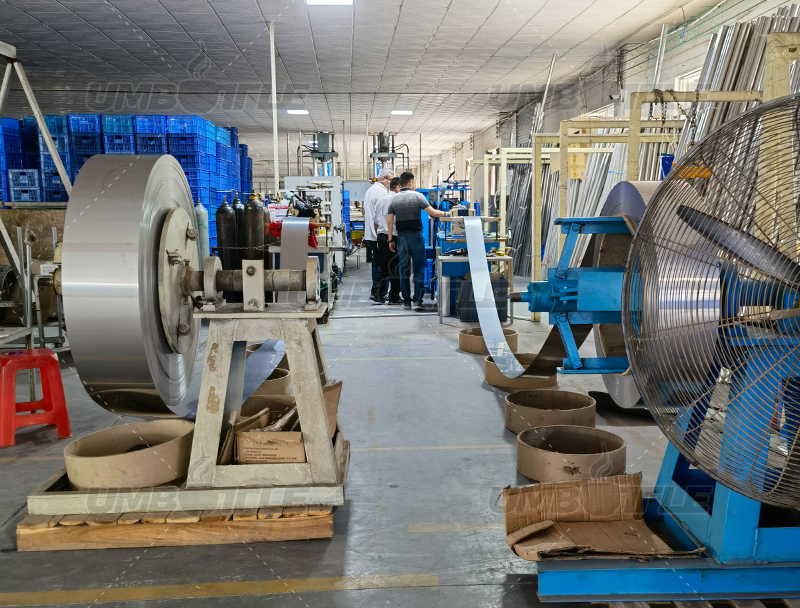How is the double-layer stainless steel thermos produced?
Hello everyone, "Dong Dong Talks About Cups" is here. Yesterday, the editor shared what is the insulation principle of thermos cups?Interested friends can look through the editor's article yesterday. I don't know if you will like the content written by the editor today, "How are double-layer stainless steel thermos cups produced?" http://www.umbottle.com/ProductsDetail-VB-10344.htmlThe editor hopes that by telling you how double-layer stainless steel thermos cups are produced, everyone will have a certain understanding of the use and quality inspection of thermos cups.
I will share with you in a simple and straightforward way first, and then I will focus on some places that need detailed explanation. I will start with double-layer stainless steel for double-layer stainless steel insulated cups. I have explained the stainless steel needed for the production of thermos cups many times before. If it is food grade, the thickness of the steel required for production is based on the product design needs and production process requirements. There is no fixed rule. http://www.umbottle.com/ProductsDetail-VB-10344.htmlDouble-layer stainless steel requires double layers of stainless steel inside and outside, with the outer shell and the inner liner. The cut stainless steel coil is formed into a water cup shape through welding (or stretching), water expansion and other processes, and then the outer shell and the inner liner are welded together. Among them, the semi-finished products are subjected to plastic shaping processes such as bottom cutting and cutting to ensure that they meet unified standards for subsequent process production.
The cup bottom with the getter welded is welded to the cup body, and a high-temperature vacuum process is performed through the reserved exhaust hole. When the double layer reaches a vacuum, the reserved hole is sealed with a dissolved glass synthetic solution. At this step, the semi-finished product with insulation function is completed. Next, cleaning, polishing, electrolysis, spraying, printing, assembly, and packaging are completed. http://www.umbottle.com/ProductsDetail-VB-10344.htmlIn this way, a double-layer stainless steel insulation cup is completed. In order to ensure the stable quality of stainless steel water cups shipped out of the factory, the water cups must be tested before and after storage. Through repeated testing, water cups with unstable quality are screened out.
Seeing this, I believe that friends who have read it carefully will have some questions. The editor summarizes some questions to answer:
1. When double-layer stainless steel is welded together, will there be any poor welding? Yes, there will be. Poor welding includes large weld nodules, cold welds, incomplete welding, etc. Large weld nodules affect the appearance and the user experience is not good. Cold welds and incomplete welding will directly lead to the water cup not being vacuum and losing the insulation function.
2. Food-grade stainless steel is 304 and 316, why do many water cups use 201 stainless steel? Many manufacturers use 201 stainless steel as the outer shell of double-layer stainless steel thermos cups, which is actually skirting the rules. According to national standards, the material in contact with water must be food grade. Since the outer shell does not come into contact with water, the use of 201 stainless steel production is also tacitly approved by the market supervision department. http://www.umbottle.com/ProductsDetail-VB-10344.htmlBut strictly speaking, the material in contact with the mouth should also be food grade. The combination of the outer shell and the inner liner of the double-layer stainless steel water cup on the market is generally 201 stainless steel outside and 304 stainless steel inside, or 201 stainless steel outside and 316 stainless steel inside, 304 stainless steel inside and outside, and 304 stainless steel outside and 316 stainless steel inside.
Why do the same style of stainless steel thermos cups bought at the same time have different heat preservation time but different colors? http://www.umbottle.com/ProductsDetail-VB-10344.htmlThis has nothing to do with the appearance color. The different heat preservation time is due to the fact that some processes in the production process of the water cup are not completely unified, especially the processes related to the heat preservation function.
There are many questions about thermos bottles. Today, I will briefly summarize some of them. http://www.umbottle.com/ProductsDetail-VB-10344.htmlIf you also have questions that you need to know, please chat with me privately or reply under my article. I will answer all the questions that everyone is generally concerned about.

Dongguan Zhanyi Commodity Technology Co., Ltd. specializes in the production of metal cups, plastic cups, coffee cups, suction mug, lunch boxes, food jar, travel mugs, portable water bottles, sports bottles, home life desktop trash cans, thermos bottles, etc.These products are all our annual exports, and are recognized and loved by the US, Europe, Australia, Japan, South Korea, Taiwan, Hong Kong and other consumers. Support for small quantity order, fast customization.